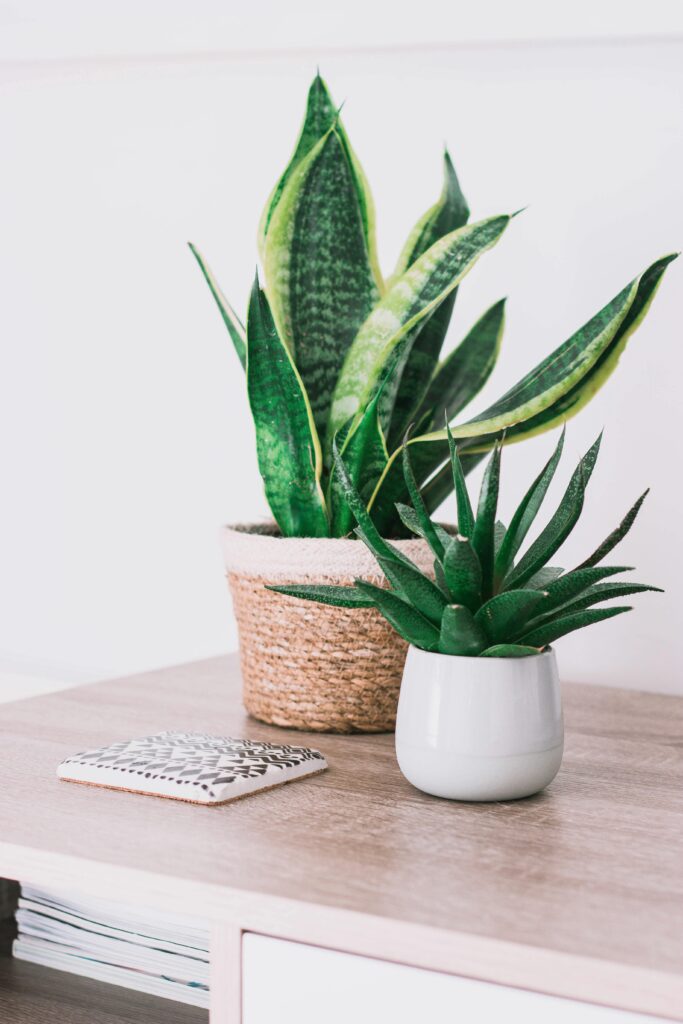Caring for Sansevieria (Snake Plants) – The Ultimate Low-Maintenance Guide

If you’re looking for a low-maintenance plant that’s nearly impossible to kill and still brings style to any room, look no further than the Sansevieria, also known as the Snake Plant. With its upright, sword-like leaves and tolerance to various conditions, it’s no wonder the Snake Plant is a popular choice for new and seasoned plant parents alike. Here’s how to keep your Snake Plant happy and thriving!
1. Lighting Needs
Sansevieria plants are incredibly adaptable when it comes to lighting. While they’ll thrive best in bright, indirect light, they can handle everything from low light to a few hours of direct sun. Just keep in mind that too much direct sunlight, especially intense afternoon sun, can cause leaf burn. For low-light rooms or offices, Snake Plants are an excellent choice.
2. Watering Routine
One of the main reasons Snake Plants are so easy to care for is their low watering needs. Their thick, succulent-like leaves store water, allowing them to go longer between waterings. Water only when the top inch or two of soil feels dry. In general, this means watering about once every 2-3 weeks during spring and summer, and less frequently in the fall and winter when the plant’s growth slows.
Tip: Snake Plants are prone to root rot, so avoid overwatering. When in doubt, wait a few more days before watering again.
3. Humidity and Temperature Requirements
Snake Plants aren’t too picky about humidity and do well in average household conditions. Avoid placing them near drafty windows in winter, as they prefer warmer temperatures (between 70-90°F). In cold conditions below 50°F, they can suffer damage, so if you’re in a chilly climate, keep them indoors during colder months.
4. Ideal Soil Mix
Sansevieria needs a well-draining soil mix. A cactus or succulent mix is ideal since it provides good aeration and prevents water from sitting at the roots. You can also mix regular potting soil with sand or perlite for added drainage.
5. Fertilizing Tips
Snake Plants don’t require much fertilization to thrive. Feed them once every month during the growing season (spring and summer) with a balanced, half-strength fertilizer. Skip fertilizing in fall and winter, as the plant will naturally enter a resting period.
6. Pruning and Propagation
Snake Plants are low-maintenance when it comes to pruning. Simply remove any damaged or yellow leaves by cutting them off at the base. Snake Plants are also easy to propagate! You can divide the plant by carefully separating root clusters or by placing a leaf cutting in water or soil to encourage new growth.
7. Snake Plants and Air Purification
Not only are Snake Plants beautiful, but they’re also natural air purifiers! They can filter toxins like formaldehyde and benzene from the air, which makes them perfect for bedrooms, living rooms, or offices.
Snake Plants make a beautiful, low-maintenance addition to any indoor space, and with just a little care, they’ll reward you with their unique charm for years to come. If you have any questions or want help finding the right Snake Plant variety, drop us a comment or reach out to us at Artistic Foliage – we’re here to help you grow your green thumb!
